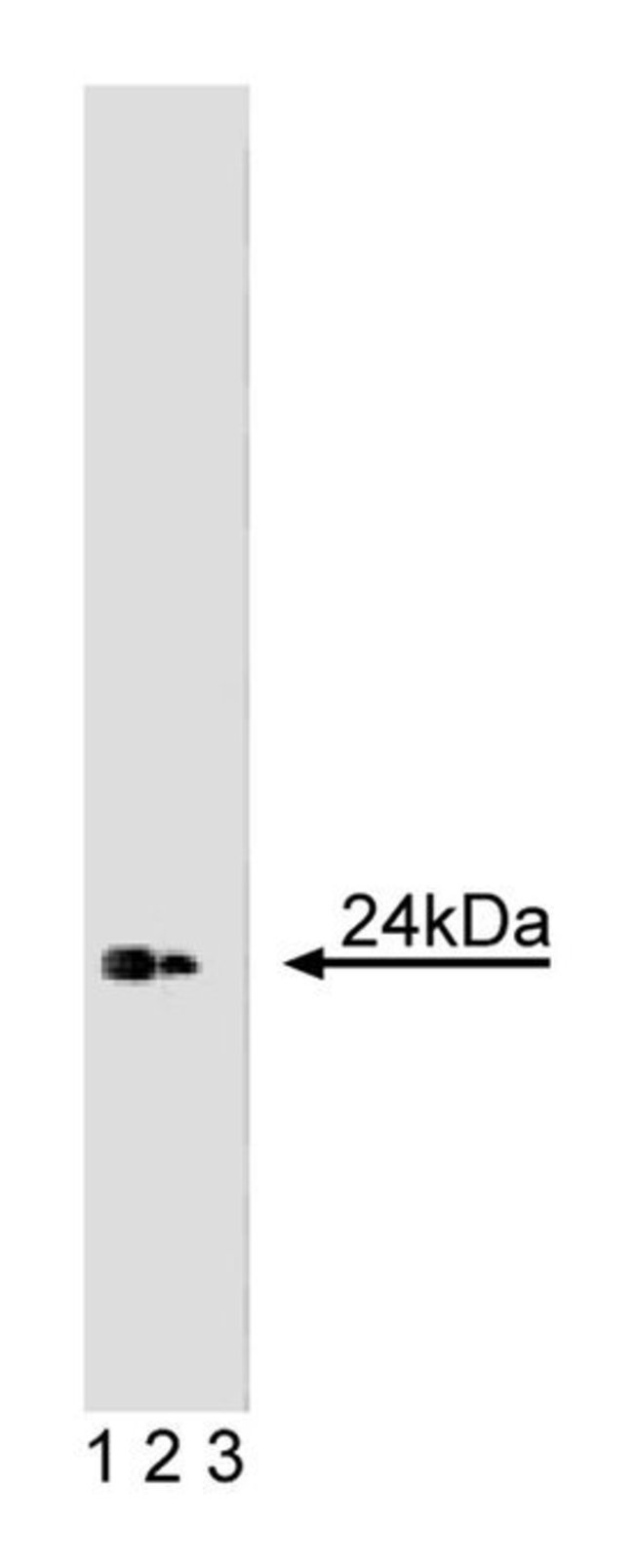Caveolin 1 Mouse, Unlabeled, Clone: 2297, BD, Mouse Monoclonal Antibody, Each

Details:
Identified as a tyrosine phosphorylated protein in Rous sarcoma virus-transformed chick embryo fibroblasts (CEF), caveolin is now known to be ubiquitously expressed. Caveolin (also known as VIP21) localizes to non-clathrin membrane invaginations (caveolae) on the inner surface of the plasma membrane. This transmembrane protein plays a structural role in these specializations. Caveolin is also present at the trans-Golgi network (TGN) and similar quantities are found in apically and basolaterally destined transport vesicles. Caveolin is part of a complex containing glycosylphosphatidylinositol (GPI)-linked molecules and cytoplasmic signaling proteins. Caveolin is a transmembrane adaptor molecule that can simultaneously recognize GPI-linked proteins and interact with downstream cytoplasmic signaling molecules, such as c-yes, Annexin II, and hetero-trimeric G proteins. Caveolin-1 can generate two forms, α and β, due to alternate splicing of the mRNA. The α isoform has been reported to be observed at 24kDa and the β isoform at 21kDa. Caveolin-1 forms large lipid-binding homo-oligomers which are believed to play a role in caveolae formation. It may also function as a scaffolding protein which concentrates andorganizes signaling molecules, a role supported by the fact that caveolin-1 interacts directly with inactive Ras and G-protein α subunits.Flow Cytometry, Immunofluorescence, Immunohistochemistry, Immunoprecipitation, Western Blotting
Additional Information
| SKU | 10134952 |
|---|---|
| UOM | Each |
| UNSPSC | 12352203 |
| Manufacturer Part Number | 610406 |

